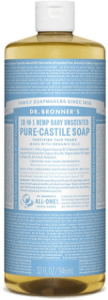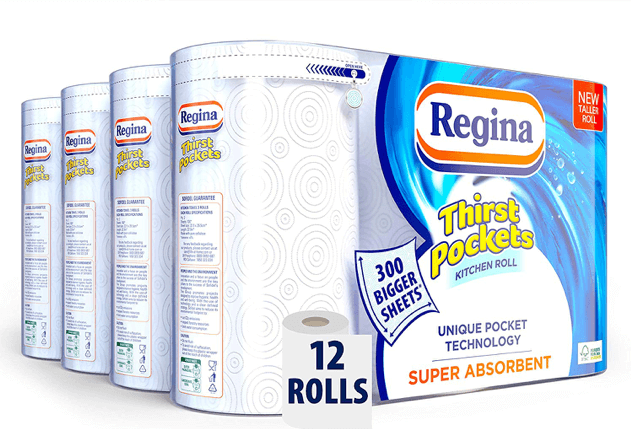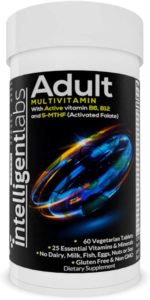You’ll find plenty of tattoo healing tips on the web. To make your life a bit easier, I’ve compiled all of them for you right here, so you don’t need to look anywhere else! Whether you’re thinking of getting inked or have just got one recently, I’ve got all the tips you need to help slash down your tattoo recovery time! That said, feel free to bookmark this page so you can read all the useful tips here in your own time.
Page Contents
What to do BEFORE you get your tattoo
Oh, yes, before you go to the tattooist’s, you should be prepared for the session ahead. A tattoo is technically a minor medical operation, you need to be of sound mind and body for the tattooing process to go smoothly. Follow these tattoo healing tips to ensure optimum healing for that tattoo you’re about to get.
1. Drink plenty of water
Water may be flavourless, but it’s called liquid gold for a reason. Our bodies NEED water. Soda, fruit juice and even alcohol may taste better than water, but when it comes to health benefits, no other liquid comes close to water.
You can buy tons of beauty products to make your skin glow. But if you don’t drink enough water daily, your skin’s still going to end up dry and wrinkly.
Water helps hydrate and moisturise skin. It increases skin elasticity as well which will make your tattooist’s job a lot easier. Additionally, water helps fight sickness and infection, which will obviously be great for your tattoo to heal fast.
According to this report, men should drink at least 3.7 litres daily, whilst women’s recommended minimum is 2.7 litres a day. To help you reach your water goals, try using a daily water bottle with time markers.
2. Refrain from drinking alcohol and caffeine
Alcohol and caffeine will have an opposite effect than water. Instead of helping your skin stay supple, it’s going to make it go dry. This is because alcohol and caffeine are well-known dehydrators. Plus, alcohol even has an undesired effect – it thins your blood and makes you more prone to bleeding! So, if you don’t want to make your tattooist’s job a difficult one, stick to drinking lots of water.
3. Avoid aspirin and other blood-thinning medication
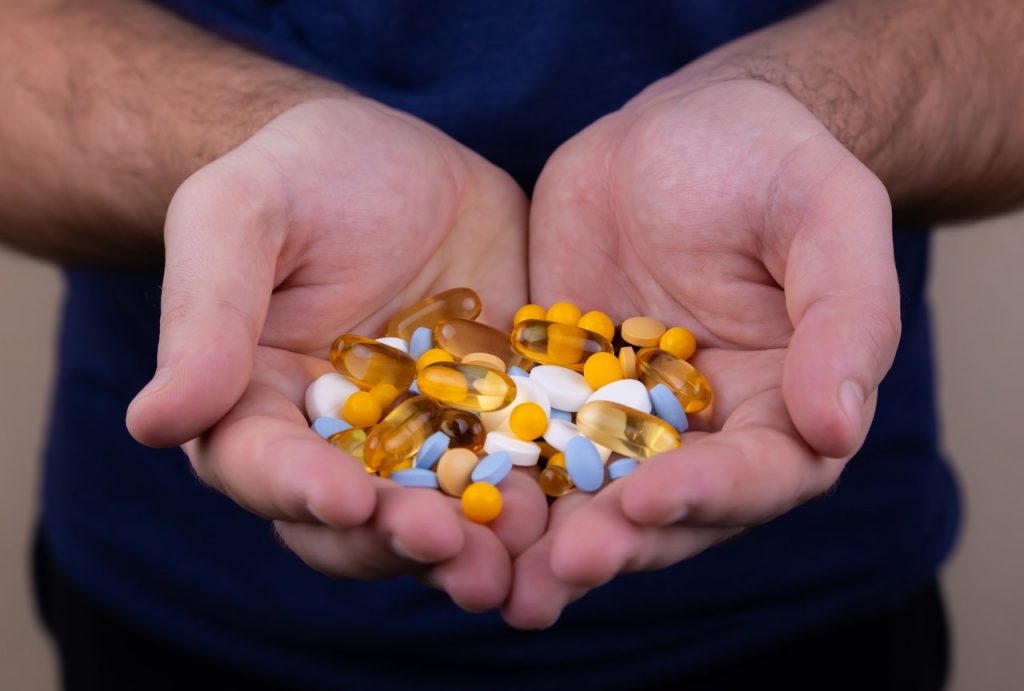
Image source: Volodymyr Hryshchenko
Some people rely on blood thinners to protect themselves from strokes and heart attacks. This is because blood thinners help blood flow smoothly through the arteries and veins, and help reduce life-threatening blood clots. If you need blood thinning medicine, you may need to re-think your plans of getting a tattoo.
Aspirin is a pretty common over-the-counter medicine, and people take it all the time for minor ailments. However, when taken before a tattoo session, it can dangerously thin the blood, which will make clotting a more difficult task for the immune system.
For tattoos to heal properly, clotting needs to commence ASAP so the bleeding can stop as well. Therefore, avoid taking aspirin and other blood-thinning substances to ensure your fresh tattoo heals normally.
4. Wear comfortable clothing on the day of
Use common sense when choosing what clothes to wear to the tattooist’s. If you know you’re going to get inked on your inner arm, wear something sleeveless. If on your legs, wear shorts. If on a normally hidden body part, wear something loose and comfortable, so it doesn’t rub too much on your brand-new tatt when you make your way home. If your tattoo gets irritated or infected, it can seriously affect the rate at which your tattoo heals.
5. Ask your tattooist for ink ingredients
Don’t be shy. Ask them what sort of ingredients are used in the ink. If they can’t give you the info, then perhaps you’re better off looking for another tattooist. The last thing you want is to have a tattoo ink allergy – it’s absolutely no fun, at all!
The best tattoo inks use non-toxic, organic and vegan-friendly ingredients. You want to avoid ink that uses heavy metals like cadmium, mercury, lead, iron, nickel, cobalt, etc.
Cadmium, especially, is a well-known culprit that reacts with the sun, even years later! Cadmium is used in red and yellow tattoo inks, so if you plan on getting inked in these colours, make sure cadmium isn’t on the ingredients list!
Alternatively, if you’re not sure whether or not you’re allergic to any of the ingredients, you can ask your tattooist to do a simple patch test on your skin. They’ll either put a drop of ink on your skin or tattoo a tiny dot. If you see a reaction in 24 hours or so, then you’re better off using another colour or brand (you need to do another patch test then).
6. Assess yourself if you have any underlying skin conditions
If you have pre-existing skin conditions such as psoriasis or eczema, then you may need to have a chat first with your doctor to see if a tattoo’s something you can get. Also, if you’ve got keloid-prone skin, you should rethink your decision – getting a tattoo may cause you more harm than good!
An underlying skin condition may cause issues with your tattoo. Instead of healing in a matter of weeks, you may experience flare-ups and reactions which will delay the healing, if at all!
7. Get a good night’s sleep
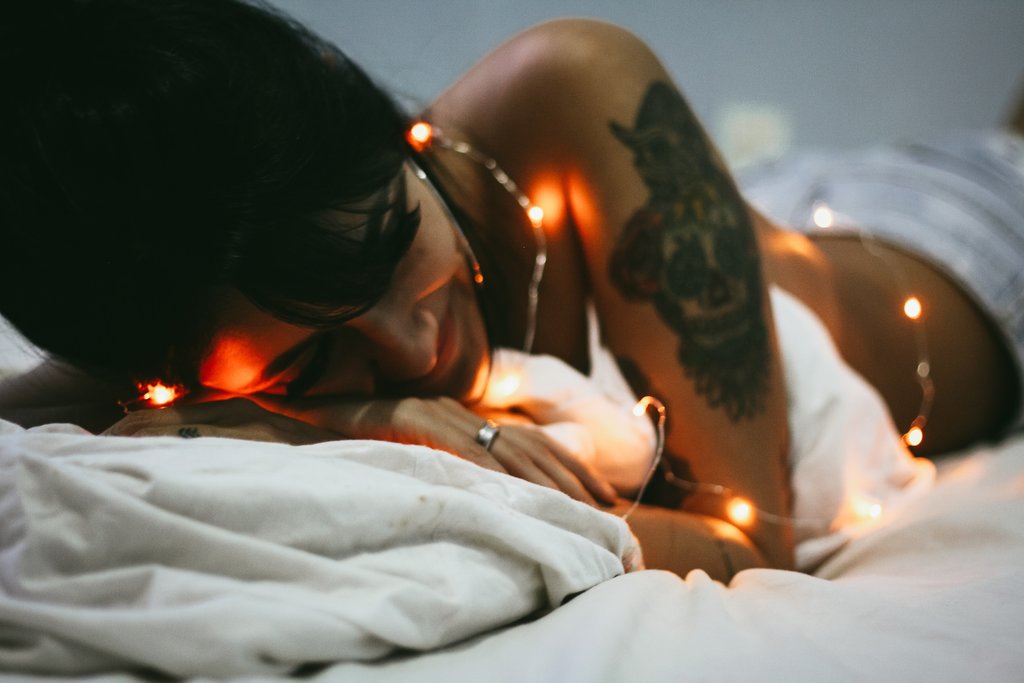
Image source: Matheus Ferrero
Tattooing is a physically stressful activity, especially if you’re going under the needle for several hours! You need to be well-rested before the event. Otherwise, you may not have the mental fortitude to withstand the pain (because, yes, tattoos are painful especially if it’s your first time)!
Tattooists also appreciate clients who come prepared. It’s easier to work on their skin, which minimises mistakes from happening. Ultimately, being well-rested will have an effect on how fast your brand-new tatt heals.
8. Choose tattoo location wisely
Where you choose to have the tattoo done will have an effect on how fast it heals. For example, tattoos that get lots of contact and movement will most likely heal slower than tattoos in more-or-less stationary areas.
For example, palm tattoo healing will most certainly be slower than a more common arm tattoo. This is because the palm gets a lot more contact than your arm – you wash your hands all the time and you hold things with your palm. All these can slow down the tattoo healing process.
9. Hire a licensed professional tattooist
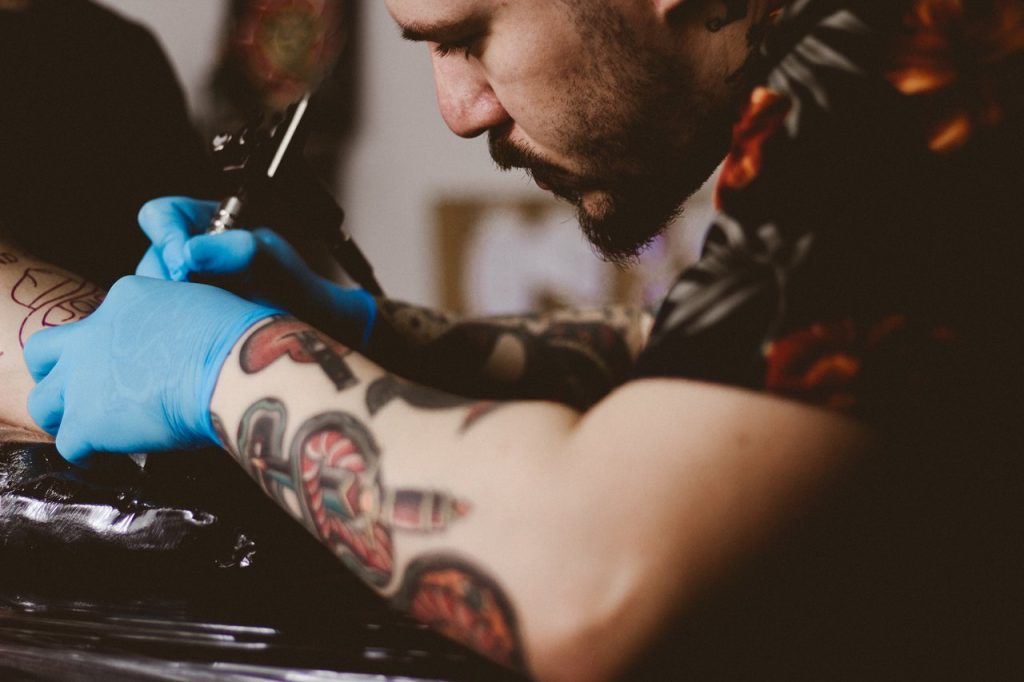
Image source: Allef Vinicius
Don’t ask your friend to do a tattoo on you, unless that friend’s a licensed tattooist. There may be talented scratchers, a.k.a. illegal tattooists, out there. But operating without a license is a huge red flag. The tattooing industry is regulated in the UK and if you want some level of protection, go with a licensed tattooist.
You can book appointments online, but I would highly recommend paying the studio a visit well before your appointment, so you can:
- Check how clean the premises are
- Ask to see their registration certificate (if it’s not displayed somewhere in the shop)
- Ask to see their portfolio or pictures of past work
- If possible, ask to observe a tattooing session from a distance
Licensed tattooists rely on their good name and reputation for their livelihood. Scratchers don’t – they’re most likely in it for the experience and the money.
10. Do plan your tattooing session on weekends or during holidays
One of the best ways to allow your tattoo ample time to heal is to actually have it done on holidays or weekends. You don’t want to get a tattoo on the first day of your work week.
As you very well know, tattoos are going to live on your skin forever. Don’t rush it – plan it so you can rest for at least 2 days after getting the tattoo.
The days immediately following the tattooing is the most crucial stage of the healing process. You need to keep the tattoo clean and well-aired. Protect it from the elements so it will heal properly.
Tattoo healing tips during the early stages of the healing process
So, now you’ve finally got your tattoo – congratulations! The tips shared in this section will definitely help speed up tattoo healing – this is the most critical stage, after all. Remember to follow your tattooist’s aftercare instructions carefully.
11. Keep your tattoo clean
A fresh tattoo is going to be weeping and oozing blood, plasma and ink. It’s going to be nasty, especially when viewed through the clear plastic film your tattooist is going to wrap your new tatt in. Simply put, it will be gross. This is why it’s recommended you remove the cling wrap a few hours after getting the tattoo. You don’t want all that fluid to congeal and stick to your new tattoo, right?
12. Use fragrance-free, antibacterial soap
To avoid irritating your still-very-much tender skin, use fragrance-free soap. Look at the list of ingredients. If it says parfum, perfume or fragrance, put it down and look for one that says unscented or fragrance-free.
Fragrances are common skin irritants, but most people aren’t aware of the hidden dangers. For brand-new tattoos, it’s especially important to steer clear of scented soaps, lest your skin develops a rash which can obviously cause issues with the healing process.
Important note: Make sure you wash your hands first before you do anything with your tattoo.
Related article: Our Top 10 Best Tattoo Soaps To Wash Your New Ink With
13. Use warm water to clean your tattoo
Room-temp water is fine, but warm water works best at washing the goo off your skin. Actually, some tattooists recommend using hot water to wash the tattoo. And by hot, they’re referring to the tolerable kind of hot, which would vary from one person to the next. For best results, test the temperature first and if you’re happy with how hot it is, then go ahead and wash your tatt with it.
14. Never use a washcloth to clean your tattoo
Washcloths are great for rubbing out the dirt and grime in your skin after a hard day’s work. However, when it comes to tattoos, best put the washcloth aside. Instead, use your bare hands to clean your tatt. This is because washcloths are the perfect breeding ground for germs and bacteria. If you’re not careful, these can easily enter your still open wounds and cause a tattoo infection!
Related article: Infected Tattoo 101: Causes, Symptoms and Treatment Options
15. Let your tattoo breathe
It’s not just our noses and mouths that breathe, you know. Our skin does, too. However, it’s not typically like how you’d imagine skin breathing – you’re probably picturing tiny pores sucking air like hungry, newborn babes. No, it’s actually blood that carries much-needed oxygen throughout the body.
When we say letting the tattoo breathe, we’re referring to not blocking it with occlusive substances. This is why Vaseline is a big no-no in tattoo healing because it’s pure petroleum jelly that blocks oxygen from getting into skin.
That said, once you’ve cleaned out your tattoo, try not to wrap it up again (you risk infecting the wound). But if you must, make sure there’s still room for your tattoo to breathe.
16. Use kitchen roll to dry out your tattoo
Don’t use cloth towels, no matter how clean you think it is. Kitchen rolls or kitchen towels are the preferred drying material for brand-new tattoos. This is because it’s highly sanitary (provided you store it in a clean place), and it absorbs water and goo well.
Unlike cloth towels, you don’t need to worry about loose fabric and threads sticking to your tattoo, which could be an infection starter.
17. Apply healing ointment
So, now that your tattoo’s clean and dry, it’s time to put some ointment on it. Of course, if you’re following the dry healing route, then you can skip this tip.
When it comes to healing ointments, you’ve got a few choices. The most popular and cheapest ones are Aquaphor and A+D ointments. You can find these at the chemist nearest you or at the supermarket.
There are two reasons why you want to put ointment on a healing tattoo:
Firstly, it protects your skin from bacteria and germs. But at the same time, it still allows oxygen to enter the skin. Secondly, by protecting the skin’s surface, your body can go about its business of healing your wound. Please refer to the image below to see how this works:
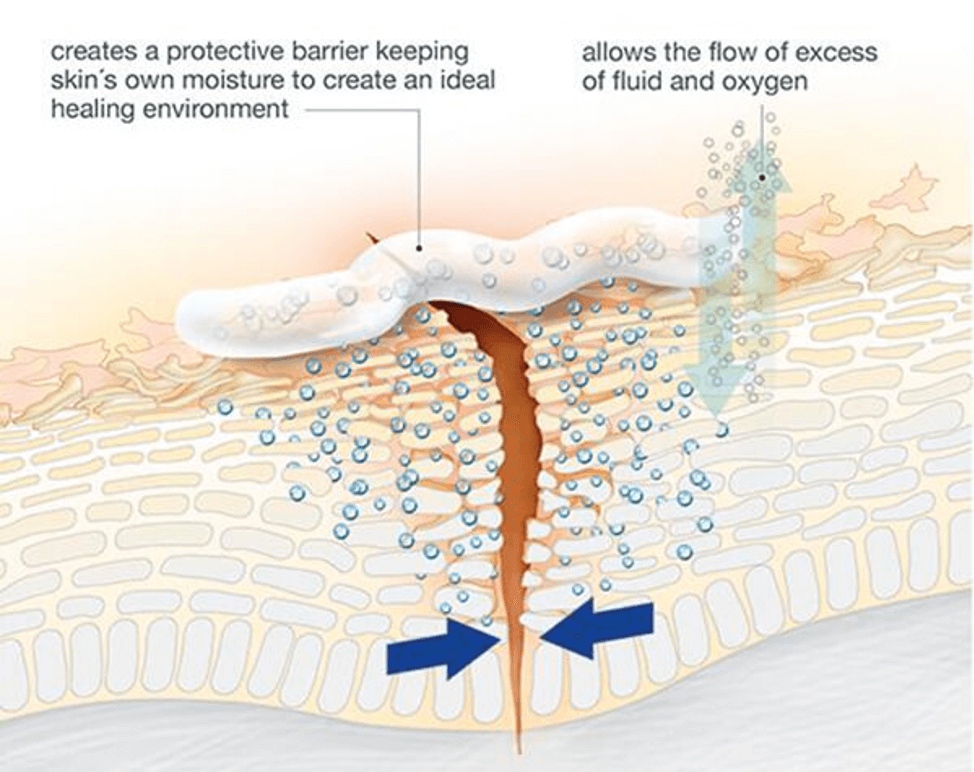
Image source: https://www.aquaphorus.com/how-it-works/
Of course, not all ointments are created equal. As we’ve mentioned earlier, Vaseline is highly occlusive and should not be used on healing tattoos.
Also, if you’re not a fan of petrolatum-based ointments like Aquaphor and A+D, then an organic ointment like Hustle Butter or Saniglide may be more to your liking. Either way, by protecting your tattoo, you’ll help speed up your tattoo healing time!
18. Don’t sleep on your tattoo
Just like with any other wound, you also don’t want to apply pressure on your brand-new tattoo. If you do, you can irritate the area, and depending on what your tattoo’s rubbed up against during the night, can also cause an infection.
That said, a good night’s sleep is essential to tattoo healing. So, you want to find a comfortable spot to rest, and at the same time, let your body recover from the ordeal it just went through!
19. Don’t soak your tattoo in water

Don’t soak your new tattoo! (Photo by Naomi August)
During the wound healing process, it’s highly recommended to stay away from swimming in tubs, pools, lakes, seawater, and any body of water actually. This is because the tiny puncture wounds brought about by your tattooist’s needles are still very much open. And until these wounds are all closed up, it’s best to avoid soaking in water.
Bathtubs and pools are notorious for bacteria and germs – a quick dip can mean an infection. Seawater and other natural bodies of water are home to an unknown number of microorganisms that can quickly find their way to your wound.
20. Only take quick showers
Quick showers are perfectly fine even with a brand-new, weeping tattoo. It will help remove the goo and allow you to, of course, clean your entire body. Proper hygiene is important to the wound healing process. Just remember the key word here is ‘quick.’ If you take too long, you may end up soaking your tatt just the same as if you’ve taken a bath.
21. Protect your tattoo from the elements (going out, physical job, etc.)
It’s all about not getting your pretty tattoo infected. If you do need to go back to work the next day after getting inked, then make sure your tatt is well-protected. Wear loose clothing so it doesn’t rub against your raw skin.
If you need to wear tight-fitting uniform over it, perhaps wrapping it in sterile cling film will help. Just make sure it’s actually sterile and that it’s bacteria-and-germ-free underneath. Else, you’ll be leaving them trapped inside – free to wreak havoc on your tattoo!
22. Wear sun-protective clothing (don’t apply sunscreen yet)
Sunscreen lotions work great on partially healed tattoos. However, when it’s still raw and oozing, you don’t want to put any kind of lotion on it. During the early stage of the healing process, it’s better to just wear sun-protective clothing.
Not sure which fabrics offer sun protection?
Hold up your clothing to the light. If you can see through, then it won’t do a good job of protecting you. However, if the fabric blocks out the light, then UV radiation won’t easily penetrate the fabric, thus protecting your skin.
Examples of sun-protective clothing are densely woven fabric like wool, canvas, and denim.
Related article: Can You Put Sunscreen On New Tattoos?
23. Avoid going to the gym or any strenuous physical exercise
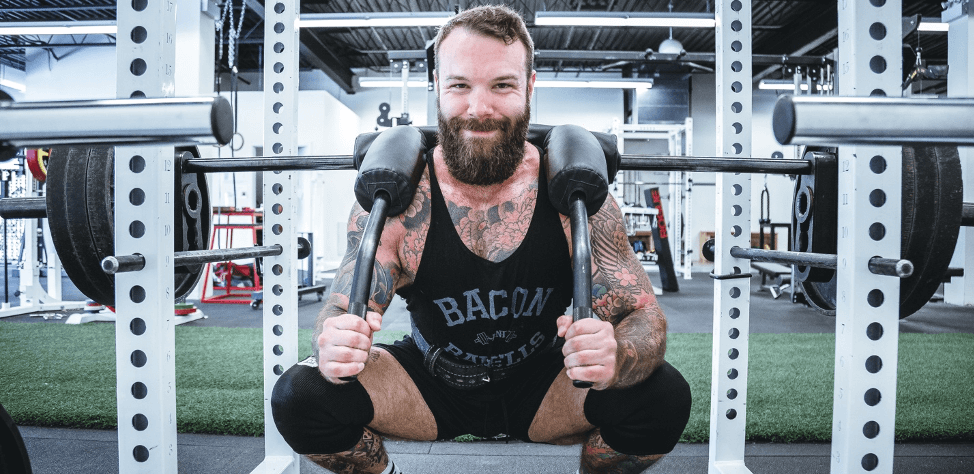
Image source: Alora Griffiths
This tip is especially important if you got a multi-hour, extra-large tattoo. You need all the rest you can get. You just got through a mini-surgical session, after all.
For gym bunnies, you can try squeezing a quick workout BEFORE the tattoo session. But personally, I don’t agree with this. You need all the rest you can get before getting tattooed. But I suppose if you’re physically fit, then you can get away with a quick workout.
That said, take at least 48 hours off from strenuous physical exercise as it can do more harm than good at this point. Depending on where you got your tattoo, it can stretch the skin and disrupt ink placement in the process.
Beyond the 48-hour period, you still need to be careful when doing exercise, so try to keep your sets light and avoid getting anything in contact with your tattoo.
Tattoo healing tips during the middle stage of the healing process
At this point, your tattoo’s healing quite nicely, and you should be seeing scabs form. Don’t worry though if no scabs appear – it’s quite rare but it does happen in the real world. That said, here are some tips for taking care of your (very itchy) tattoo during this stage.
24. Don’t pick and pull at scabs
Scabs may look unsightly, but they’re actually one of the good guys – the ‘hard shell’ protects the healing skin underneath. It’s your body’s natural band-aid, so to speak.
I know that when scabs start to form, it’s also the beginning of an itchy tattoo! I also know it’s easy to say “resist the urge to scratch” than to actually do it.
But here’s why you should leave your scabs alone:
When you pick and pull scabs off prematurely, you also risk exposing the still-unhealed skin underneath. Another downside is that some ink from the dermis could also be pulled out! This could lead to ‘patches’ or blank spots in the tattoo which would obviously affect the design.
25. Apply lotion on normal-sized scabs
With the tiny punctured wounds now all closed up, it’s now time to begin moisturising your tattoo. Just like the soap you use to wash your tattoo, choose a non-fragranced lotion or moisturiser.
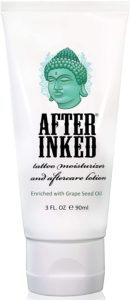
We highly recommend After Inked Tattoo Moisturizer and Aftercare Lotion. It’s enriched with grapeseed oil plus a few other ingredients to help nourish your skin. It’s guaranteed to hydrate your tattoo like no other!
Related article: The Best Tattoo Aftercare Lotions, Ointments, and Creams
26. Apply lotion on the surrounding area of giant, non-normal scabs
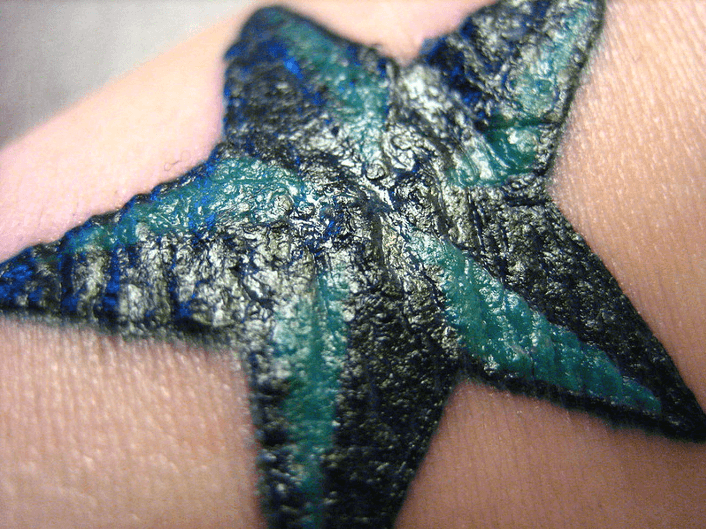
Don’t apply lotion directly on a giant scab (Photo by Amanda from Flickr)
Giant scabs aren’t normal for a healing tattoo. If you followed our tattoo healing tips during the early stages (tips # 11 to 23), then scab formation would have been kept to a minimum.
But if it’s already there, what you can do apart from not forcibly pulling it out is to make sure you don’t apply lotion directly to the scab. This is because scabs are super absorbent. Lotions can cause the scab to go soggy which may lead to it falling off prematurely.
To avoid this scenario, it’s best to just apply lotion to the area surrounding the scab.
27. Eat a healthy diet
This advice may be a bit cliche, but the saying “healing starts from within” is real. Drinking lots of water and eating healthy food can solve a lot of health problems, and it can accelerate tattoo healing.
That said, if your diet is somewhat lacking (ehem, too much junk food), consider taking a multivitamin. We recommend Intelligent Labs’ Adult Multivitamin. Each bottle contains 60 vegetarian capsules (so it’s good for 2 months), with each capsule containing 25 essential nutrients in their most bioavailable forms.
28. Avoid wearing tight clothes
The weeping and the oozing may have stopped, but the area is still very much tender. Tight clothes should still be avoided at this point. You don’t want anything rubbing against your tattoo – and the scabs. So, if possible, wear loose and comfortable clothing. Your tattoo will thank you!
29. Start applying sunscreen when you go out
As you’ve learned earlier, sunscreen shouldn’t be applied to a weeping tattoo. But now that it’s stopped weeping, you can apply some SPF lotion when you go out into the sun.
The only downside to using this type of lotion is that it doesn’t last as long as other moisturising lotions. You’ll need to re-apply every two hours or so (will depend on the brand, too, so check the bottle’s packaging).
How to deal with an itching tattoo
This stage of the healing process is going to be insanely itchy! Here’s how you deal with the itch:
30. Apply a cold compress
Cold compresses work not just for reducing fevers, but it’s also great for relieving super itchy tattoos. Of course, you can only apply a compress when the surface of the skin’s no longer broken, a.k.a. it’s healed. Otherwise, you risk germs and bacteria from making a grand entrance and infecting your wound! To minimise the risk of infection, it’s better to put some clean cloth in between your tattoo and the compress.
31. Tap or pat the itchy spot
This technique works for a lot of people. When the itch strikes, gently tap or pat the area. You can use a bit of force, but try not to hurt yourself, alright? The relief it will bring you will only be temporary, so you may need to slap yourself several times before the itch finally goes away (until the next flare-up, of course).
32. Get busy with something
List down all the favourite things you like doing. It can be part of your job or a hobby, perhaps. Whatever it is, it should keep your mind off the itching. With your mind occupied with something more interesting and more exciting, you’ll soon forget your tattoo’s even there.
33. Mind over matter
With positive thinking, self-discipline and extraordinary determination, you can resist the urge to scratch. You can start a mantra like:
- I can do this – I can make it through this itchy period.
- I will not scratch my tattoo.
- I will not ruin my tattoo by scratching it.
Of course, you need to believe in the mantra to make it work. Otherwise, you’ll be really, really tempted to scratch your tatt.
“Mind over matter” will help you control your impulse to scratch. It will take a lot of self-awareness – you’ll probably catch yourself in the act of scratching a few times – but with practice, you should be able to get the itch under control.
Important note for Tips #33 and 34: Please consult with a medical professional before taking antihistamine or hydrocortisone for your itchy tattoo.
34. Take antihistamines
Histamines are natural chemicals produced by the immune system. It protects us from perceived threats such as allergens and irritants.
Now, tattoo ink is obviously a foreign object, and as such, it’s not surprising that your immune system will try to get rid of it; hence, the production of histamines. It will stimulate the area surrounding the ink pigments to try and get the ink out. This is why your tattoo will itch so much during the healing process.
Fortunately, antihistamines do work against itchy tattoos. It comes in a variety of forms – creams, ointments, syrups, tablets, and more. For still-healing tattoos, oral antihistamine is better suited as a topical application may cause an infection (especially if the skin surface’s still not fully healed).
35. Use hydrocortisone
This is another popular OTC medication that’s supposed to help relieve itchy tattoos. A thin layer of 1% hydrocortisone anti-itch cream should do wonders, but again, make sure the skin isn’t broken where you apply it!
Tips to help your tattoo heal faster during the late stages of healing
Finally! You’re almost done with the tattoo healing process! Without further ado, here’s what you should do to ensure your tattoo goes through the last stage successfully.
36. Don’t peel off the flaking skin
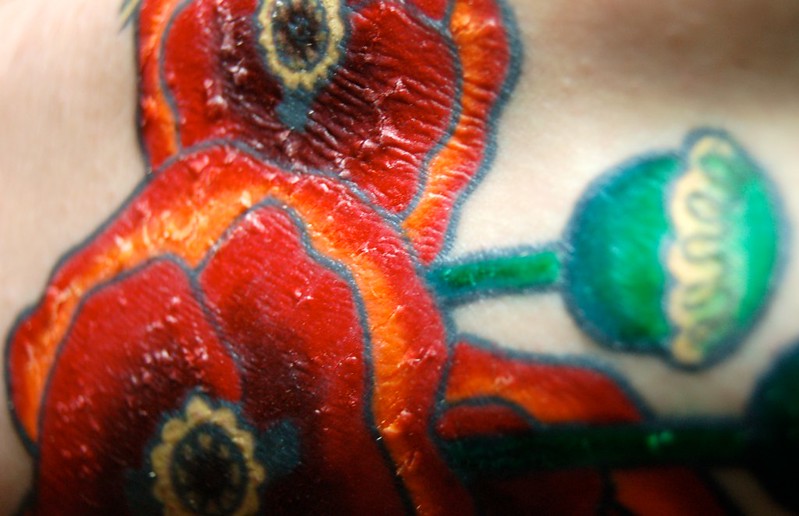
Photo of a peeling tattoo (Image by Kat Selvocki)
The scabs are eventually going to fall off. And it’s going to happen here at this stage. The scabs will reveal the new layer of skin that your body’s been creating the past several days.
It can be so tempting to pull the flaking skin now, but please don’t! There’s still a risk of pulling some ink out as well. Let everything peel off in its own time.
If you’re wondering how long a tattoo takes to stop peeling, the answer is anywhere from a couple of days to a week.
37. Continue hydrating and moisturising your tattoo
Now’s not the time to stop moisturising your tattoo. In fact, by this time, you should have made lotioning a part of your daily skincare routine, and turned it into a daily habit.
Your tattoo will eventually fade over time. But if you moisturise properly, then you’ll also be preserving your tattoo’s appearance far longer than if you didn’t! Start living a healthy lifestyle if you aren’t already – your skin and your tattoo will thank you!
Bonus Tip
If you made it this far, you deserve a bonus tip! I wrote an article on why coconut oil is great for your skin, you can check it out here. Better yet, here’s an infographic summarising the benefits of coconut oil on tattoos:
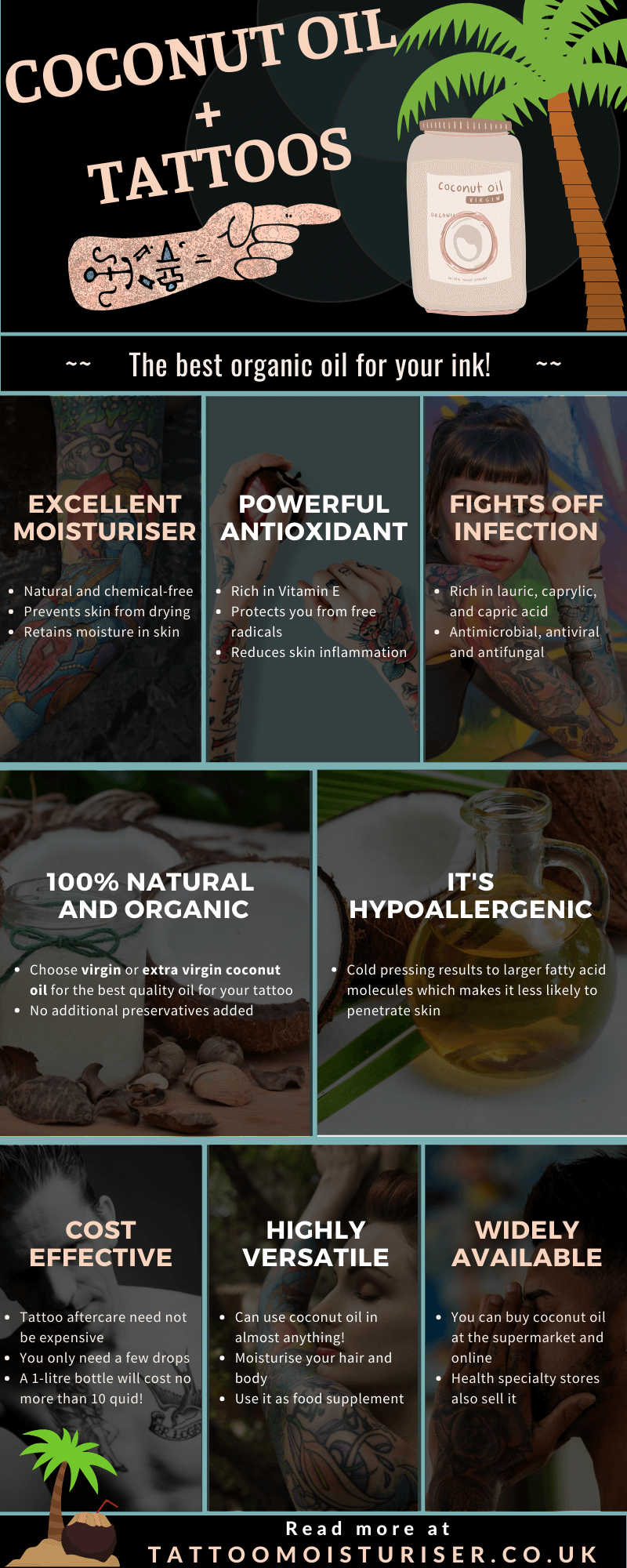
Conclusion
Each and every single person on this planet is unique, but your tattoo sets you apart from everybody else. Showing your skin art off is your prerogative – there’s certainly nothing wrong with that. But before you do, make sure it’s fully healed so you avoid risking infection. That said, I hope the 36 tattoo healing tips you’ve learned in this article will help you heal your tattoo faster!
P.S. Feel free to share this article with your friends, so they too can experience faster tattoo healing!

